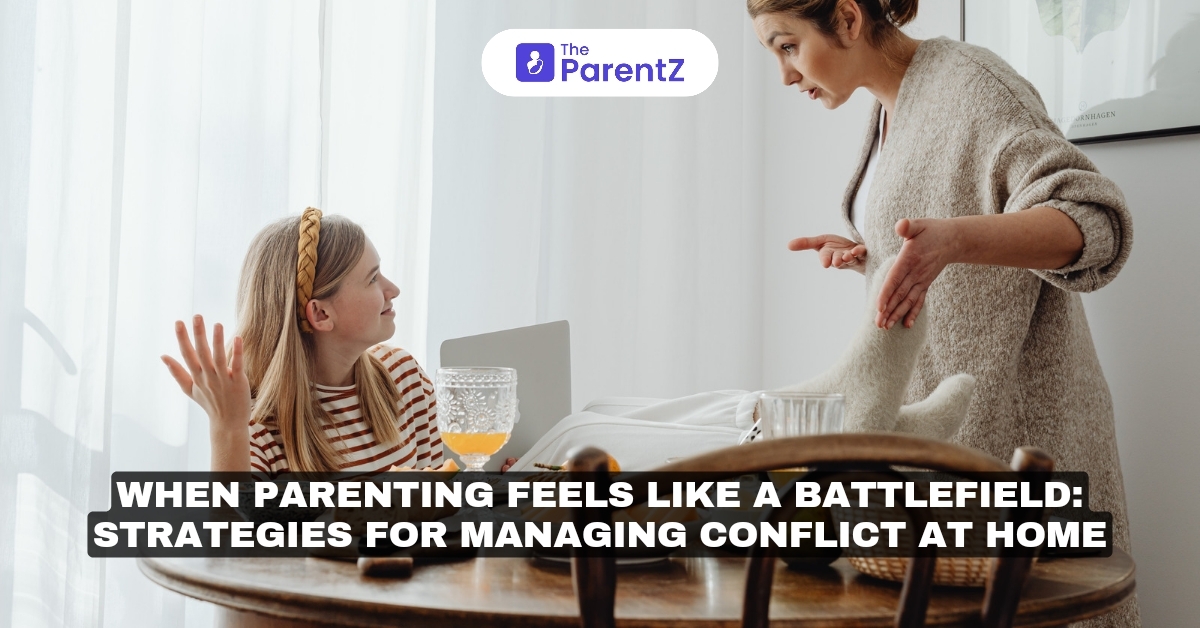Let's face it, parenthood is a beautiful journey, but it's rarely a smooth ride. Disagreements erupt over everything from bedtime battles to screen time limits, leaving us feeling like we're constantly navigating a minefield. These conflicts, while normal, can quickly spiral into a stressful "us vs. them" mentality, impacting not just our relationship with our partners but also our children's well-being.
The Ripple Effect of Conflict
Imagine your home as a pond. Every raised voice, slammed door, or frustrated sigh sends ripples outward, affecting everyone within its reach. Chronic conflict creates a constant state of tension, triggering the body's fight-or-flight response. This can manifest in children as anxiety, withdrawal, or even aggression. They may internalize the conflict, feeling responsible for the tension between their parents.
Understanding the "Why" Behind the Outbursts
When a child throws a tantrum over a misplaced toy, it's easy to see it as defiance. But consider this: their emotional development is still in its early stages. They lack the vocabulary to express complex emotions like frustration, leading to meltdowns. Similarly, teenage rebellion isn't always a personal attack. It's a natural part of their quest for independence, a chance to establish their own identity.
The Power of Perspective
Taking a step back and acknowledging these underlying causes can be the first step toward de-escalation. Remember, everyone experiences conflict differently. A seemingly trivial issue for you might feel monumental to your child.
Here's a parenting strategy called "Active Listening" which can be a game-changer. Put yourself in their shoes. Listen without judgment, allowing them to express their feelings. Validate their emotions with phrases like "I understand you're upset about..." This helps them feel heard and fosters a sense of connection.
Taming the Tempest: Strategies for Conflict Resolution
1. Choose Your Battles
Not everything deserves a full-blown argument. It's okay to pick your fights, focusing on issues that truly matter. For example, a messy room might not warrant a lecture, but screen time addiction might require setting clear boundaries.
2. The Art of the "I" Statement
Instead of accusatory statements like "You always leave your toys scattered around!," try "I feel frustrated when the living room is messy because it makes it hard to relax." This takes ownership of your emotions and opens the door for a solution-oriented conversation.
3. The Power of Pause
Sometimes, the best response is no response at all. When tempers flare, take a break. Give everyone a chance to cool down and revisit the issue when emotions have subsided.
4. Team Up!
Parenting is a partnership. Present a united front when addressing your children. Discuss consequences beforehand and present them as a team. This avoids feelings of favoritism and shows your children a healthy model for conflict resolution.
Remember: It's a Marathon, Not a Sprint
Creating a peaceful home environment takes consistent effort. There will be setbacks, moments when patience wears thin. That's okay! Forgive yourself, learn from the experience, and try again.
Building a More Peaceful Home
Focus on building a foundation of connection with your children. Spend quality time together, even if it's just a few minutes each day. Encourage open communication and create a safe space for them to express themselves freely.
Remember, you are your child's safe haven. By prioritizing communication, empathy, and teamwork, you can transform your battlefield into a haven of peace and understanding.








Be the first one to comment on this story.